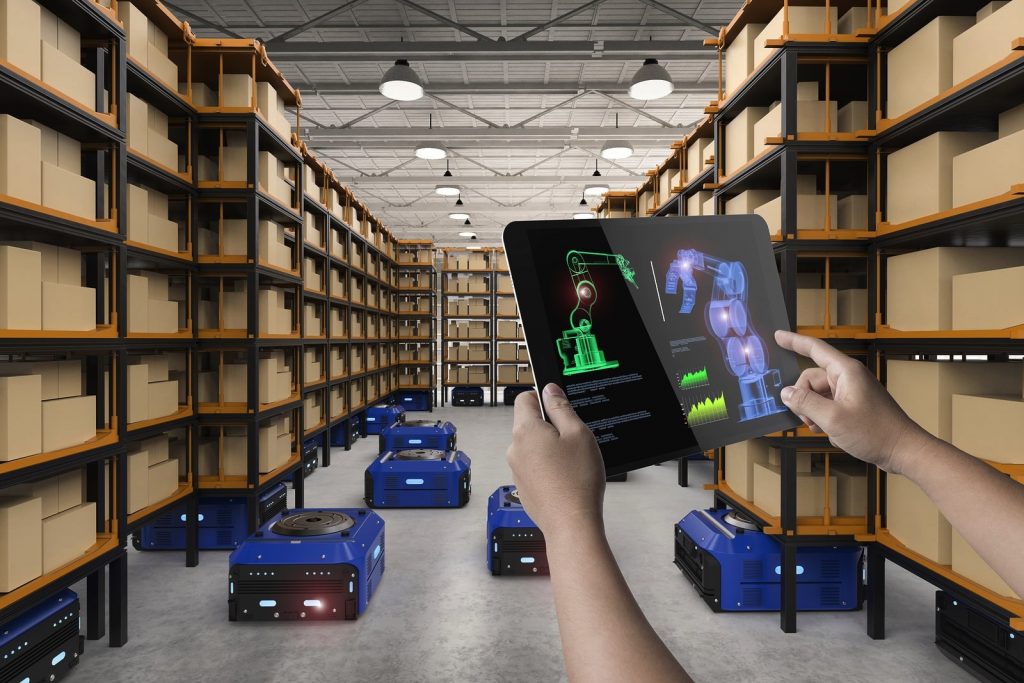Warehouse robotics
In recent years, the area of warehouse robotics has gained prominence in circles of supply chains, distribution centers, and warehouse management. It plays a significant role in warehouse automation with technologies that increase productivity. The warehouse is in the center of manufacturing and supply chain operations, as it provides the storage and holds responsibility for the safekeeping of goods.
Warehouse robotics uses automated systems for the handling, picking, sorting, and replenishment of products with precision. This innovation can guarantee high levels of accuracy in order fulfillment and warehousing operations, for inventory management.
What are the benefits of automated warehouses?
The increase of automation worldwide is leading to a decrease in the need for human labor and many people are feeling this shift. The idea behind automated warehouses is to have machines operate the heavy weight tasks, while humans remain in supervisory positions. Warehouse operators will be able to handle much larger volumes of goods per day. Automated warehouse robots can increase accuracy and accelerate repetitive processes when collaborating with human employees. The system can also lead to reduced expenses connected with human labor such as sick leave days.
Safety in the workplace cannot be overlooked. Robots can take the most stressful and dangerous aspects of operations, for example, retrieving inventory from heights and lifting heavy machinery. This assistance reduces physical accidents and can ease the mental pressure on human workers. Lessening this emotional stress can lead to a boost in employee productivity and creating a healthier work environment.
Using appropriate robots in the warehouse will lead to reducing human error. Employees can focus more on complex tasks and save time that otherwise would be wasted on going back and forth from different areas of the warehouse. Smaller chances of mistakes will also lead to a noticeable improvement in the transmission of information within the warehouse. In addition, with robots involved in warehouse management working hours of the warehouse can be extended to 24/7, resulting in much more cargo loading and deliveries.
What are the negative sides of using automated systems in the warehouse?
Purchasing equipment for work in the warehouse demands that a company consider the long-term benefits, due to the high investment price for automation. Although labor costs may be reduced (fewer insurance payments and employee benefits), the warehouse still needs to pay for maintenance and programming. We must keep in mind that robots are limited in terms of their flexibility and as opposed to humans they are not able to analyze and apply critical thinking. Humans can still outperform the machine in many respects. In addition, they are not able to respond appropriately to changing circumstances or unpredictable situations.

Warehouse Management Systems (WMS)
The big game-changer for warehouse automation was the development of the Warehouse Management System, a cost-effective method to achieve better efficiency and more accurate inventory. A warehouse management system is a software application providing better support and optimization of warehouse functionality and distribution center management.
This system facilitates warehouse management in daily planning, organizing, staffing, and more. It also assists in directing the utilization of available resources by providing real-time inventory to move and store materials into, within, and out of a warehouse.
As mentioned a WMS offers support to staff in the performance of material movement and storage in and around a warehouse. To ensure efficient logistics and supply chain management, a WMS is often integrated with other related systems, such as ERP (enterprise resource planning), transportation management systems (TMS) and inventory management systems.
This integration with cargo management systems can open up a new way of improving transport in the supply chain. When a truck comes into the warehouse to collect cargo, an automated truck loading system will be ready, therefore the truck will not need to waste time waiting in a line. It works the same in both directions – a loaded truck arriving at the warehouse with cargo will have a robot waiting that prepares the area for delivery. Much time and resources can be saved.
In the near future, when autonomous trucks are expected to be on the road for transporting goods, they will be able to connect directly with the automated warehouse.
What’s the prospect?
Robots are autonomous machines that can offer effective solutions for productivity and security. We are in an era in which companies have the opportunity to reinvent their organization and their business model. They have the chance to not only automate the existing infrastructure, but they can also build new operating platforms adapted to robotic machines. Nevertheless, automation and robotization should have limits. To be the most effective automated machines should work side-by-side and in harmony with people.

“I do not fear computers. I fear lack of them.”
— Isaac Asimov 1920-1992
the creator of the three laws of robotics, 1942 (rules from his science fiction short story “Runaround”)
the author of “I, Robot”, 1950



